Sawsharks, which are in the family Pristiophoridae, should not be confused with sawfish of the family Pristidae. Sawsharks, as their name implies, are ‘true’ sharks within the Selachimorpha, whereas sawfish are rays within Batoidea. Sawsharks are squalimorph sharks, and are more closely related to lantern sharks, sleeper sharks, angel sharks, and dogfish than they are to more familiar taxa such as great whites, tiger sharks, whale sharks, and hammerheads. Still, despite their interesting morphology, they are considered true sharks. Despite their evolutionary distance, sawsharks and sawfish share a feature that gives them their common names, an extension of their rostrum into an elongated saw-like structure. They both use their saws for similar functions as well, using electroreceptors on the saw to detect prey buried in the sea floor and also for catching and immobilizing prey. This an example of parallel evolution, whereby two taxa share a common feature for a common function in the same period but do not have a direct common ancestor. Two features that readily separate the two groups are the presence of barbels on the saw of sawsharks and the arrangement of their gills; sawsharks, being true sharks, have their gill slits on the sides of their heads whereas sawfish have their gill slits on the underside. Also, the teeth on the side of the saw are all approximately the same size on a sawfish while they alternate between large and small teeth on a saw shark. Sawsharks are pretty rare as toys. From what I can tell, K&M made a Japanese sawshark (Pristiophorus japonicus) while Cadbury made longnose sawsharks (P. cirratus) for both the Australian and UK Yowies lines. And later this year, Bandai is scheduled to also produce a sawshark in their Diversity of Life on Earth line. Bandai has yet to indicate what the species is, but the general consensus among collectors who have seen promotional pics thinks it will also be a Japanese sawshark. At the time of this writing, Bandai also released a small, stylized sawshark (also presumably P. japonicus) in their Narabundesu series). Today we will be looking at the 2023 Japanese sawshark by Toymany for my annual Shark Week contribution. The figure was not marketed at the species level, but forum member Kenc confirmed the identification on the Animal Toy Forum.
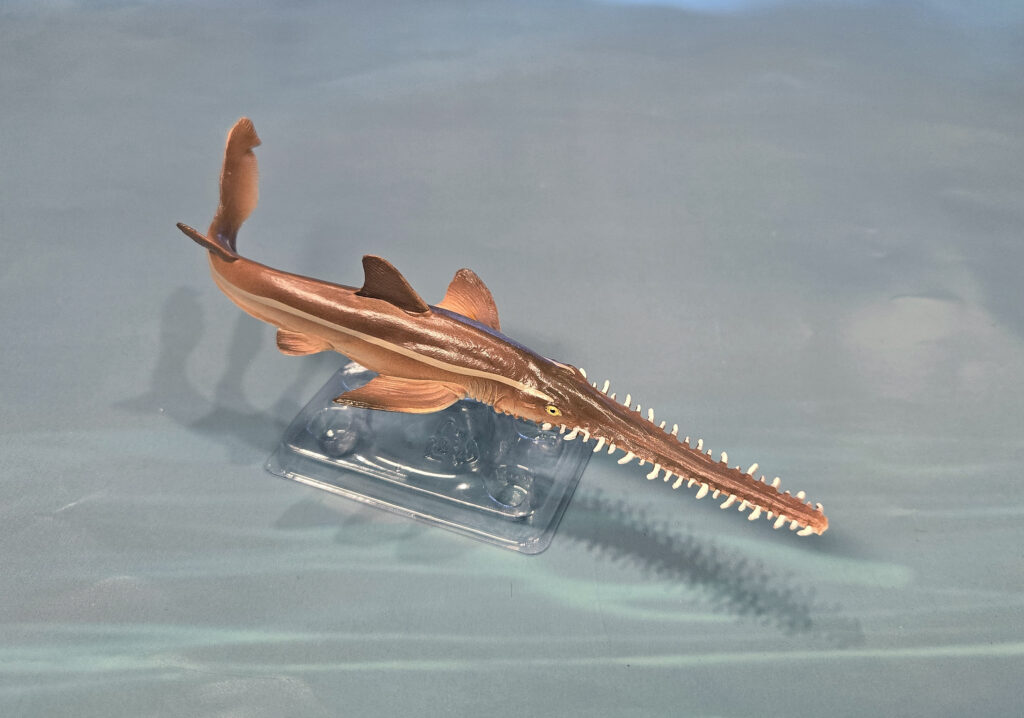
The Japanese sawshark occurs in the Northwest Pacific, from Japan to the Korean Peninsula and northern China. It primarily occurs on continental shelves and upper slopes on or near the sea floor, as well as coastal waters with muddy or sandy bottoms, as far down as 500 meters. It feeds on benthic fish and invertebrates. The Japanese sawshark is currently listed as Least Concern by the IUCN, but the species is at risk for being a victim of bycatch in bottom trawling and gillnet operations.
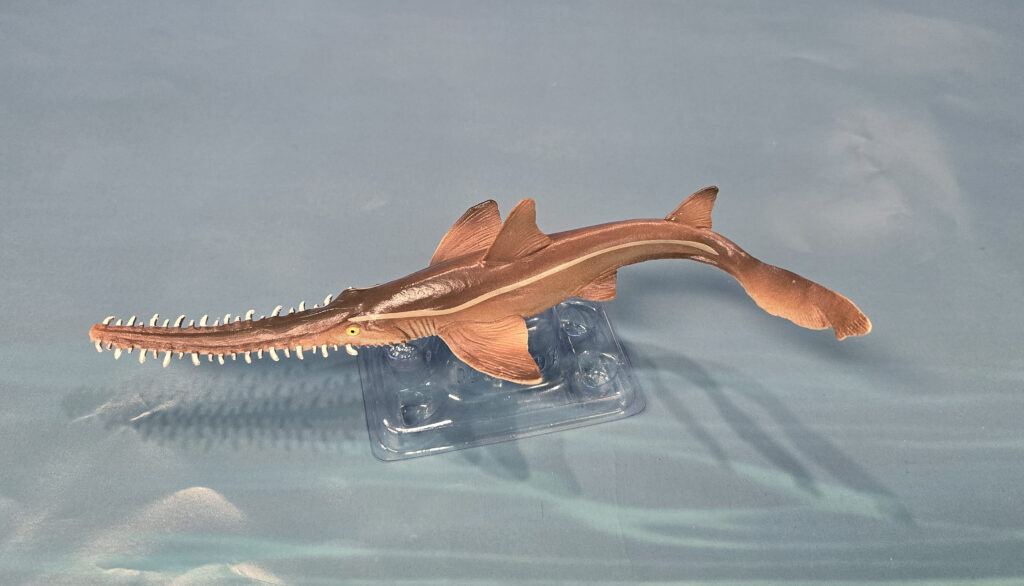
Measured along the midline, the figure has a length of approximately 20 cm, including its saw, for a maximum scale of 1:6.8 per FishBase.

The body is a rather rigid PVT but the tail, fins, and saw are softer and more pliable and prone to warping in shipping. Toymany is great about maximizing packaging size for shipping, but unfortunately some warping may occur. Luckily, dipping the figure for a brief period in hot (not boiling) water, repositioning the warped areas, and letting it cool solves the problem! The sculpt is excellent. The proportions are correct and the number of fins and their size and placement are correct. There is a correct number of gill slits (5) and the characteristic barbels are sculpted on the underside of the saw. While it means they are not visible in shelf display, it avoids the risk of breakage during handling, play, and shipping. The mouth is also well-sculpted on the ventral side and includes small teeth! The overall texture is smooth with a light semigloss.
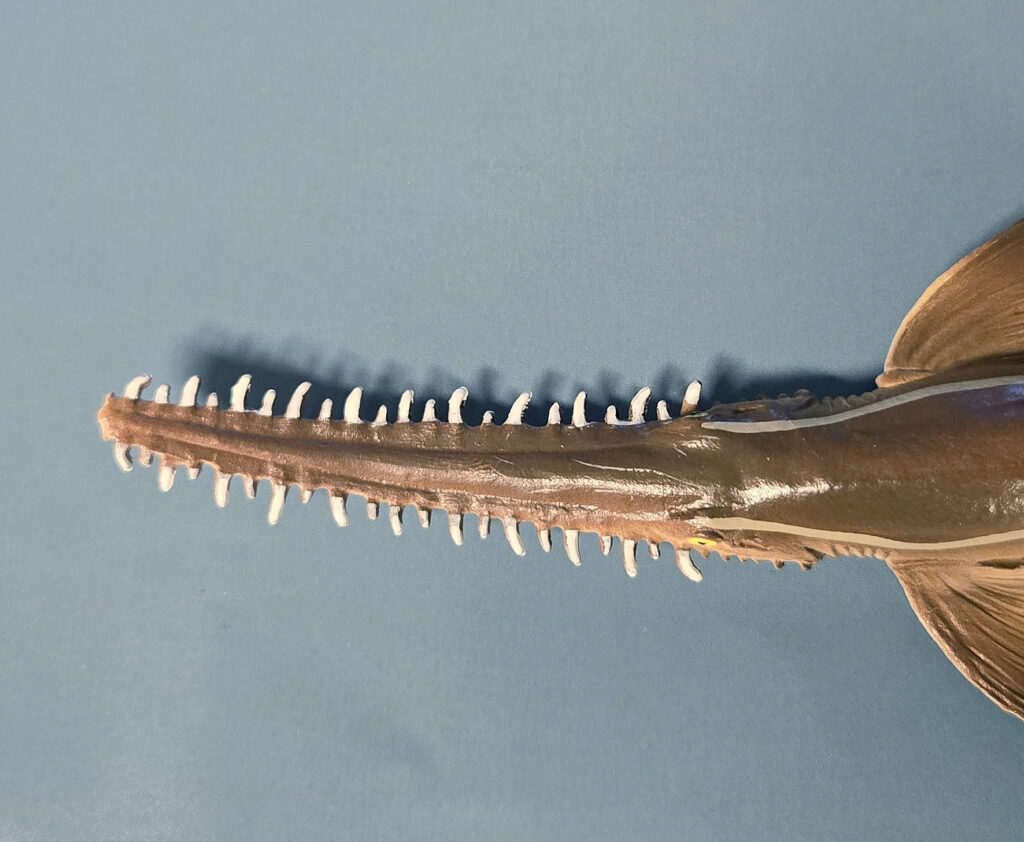
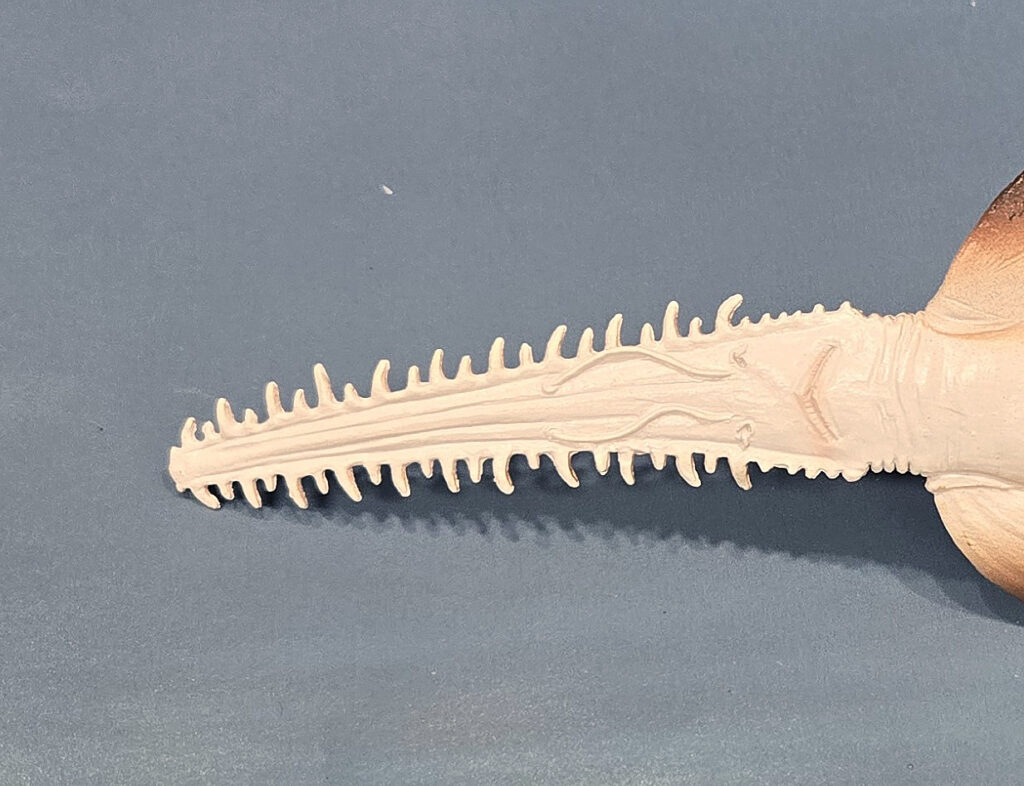
One minor nitpick is the size and arrangement of the rostral teeth on the saw. There should be 15-26 large teeth between the base of the barbels and the end of the rostrum and 9-17 (or more) behind the barbels. These large teeth are separated by 1-2 tiny teeth. On the TM figure, the teeth alternate in size, suggesting large teeth separated by smaller teeth. But if that’s the case, there are too few teeth. However, one can argue that the smaller teeth are worn larger teeth and that the true ‘small’ teeth just aren’t present. Either way, as I mentioned previously, it’s a very minor nitpick, and I think it’s more important that Toymany decided to show variation in tooth size rather than worrying about the number. Also, the teeth can break off in nature, so one can say that’s what happened here :). That a variation in size can be readily observed in this toy makes it readily stand out as a sawshark and not a sawfish! Honestly, I doubt most collectors would care about the tooth count and may not even bother to go through the trouble to count them anyway :-).

The color is accurate for this species, with the dorsal base color tan-brown with a lateral cream stripe. This stripe may be a little more pronounced than it is on most specimens in nature, but I would rather it be slightly exaggerated than missing entirely. And from what I can see looking at pictures online, there is quite a bit of variability in the intensity of the stripe. The underside is cream, except for the underside of the pectoral fins which are brown. The only other color is the yellow eyes with black pupils.
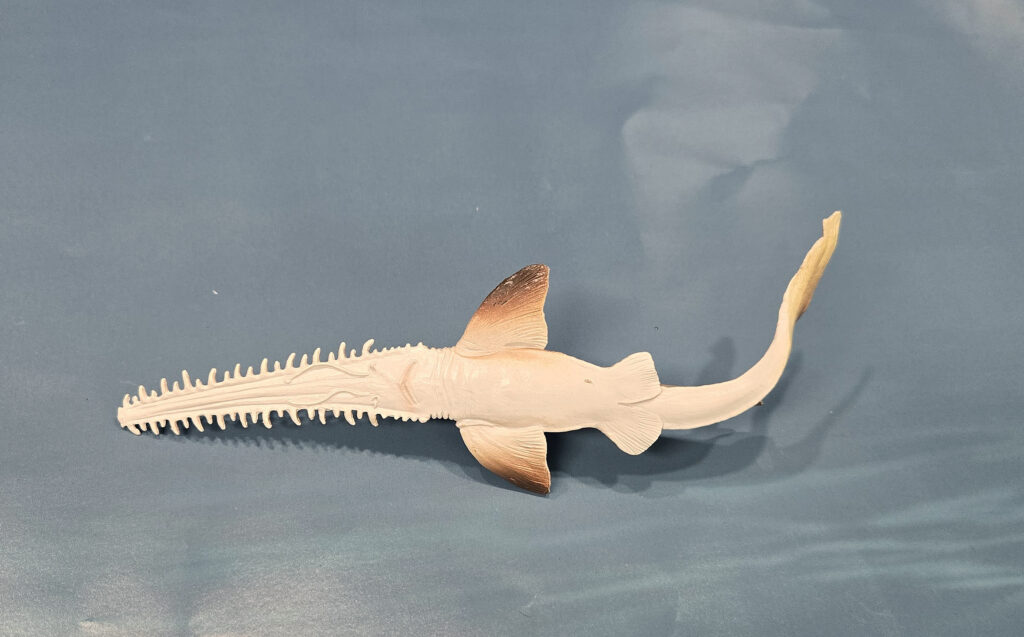
Overall this is a fantastic toy and recommended for all collectors of sea life, sharks, fish, interesting taxa, or animals in general. It is currently the best example of its family on the market and looking at promo pics, I like it more than the upcoming version by Bandai. Even when the Bandai figure gets released, I will be retaining this Toymany version in my collection! Available as a part of the 8PCS Shark Toys set or individually on Toymany’s website. Also, you can use the discount code TMAFBM10 when ordering directly from Toymany’s website and receive a 10% discount. Happy Shark Week everyone!
Disclaimer: links to Ebay and Amazon on the AnimalToyBlog are affiliate links, so we make a small commission if you use them. Thanks for supporting us!





Great review! I don’t have this set but its on the wish list, mostly for the saw shark.
I still need to get this particular figure. Just haven’t done it yet!